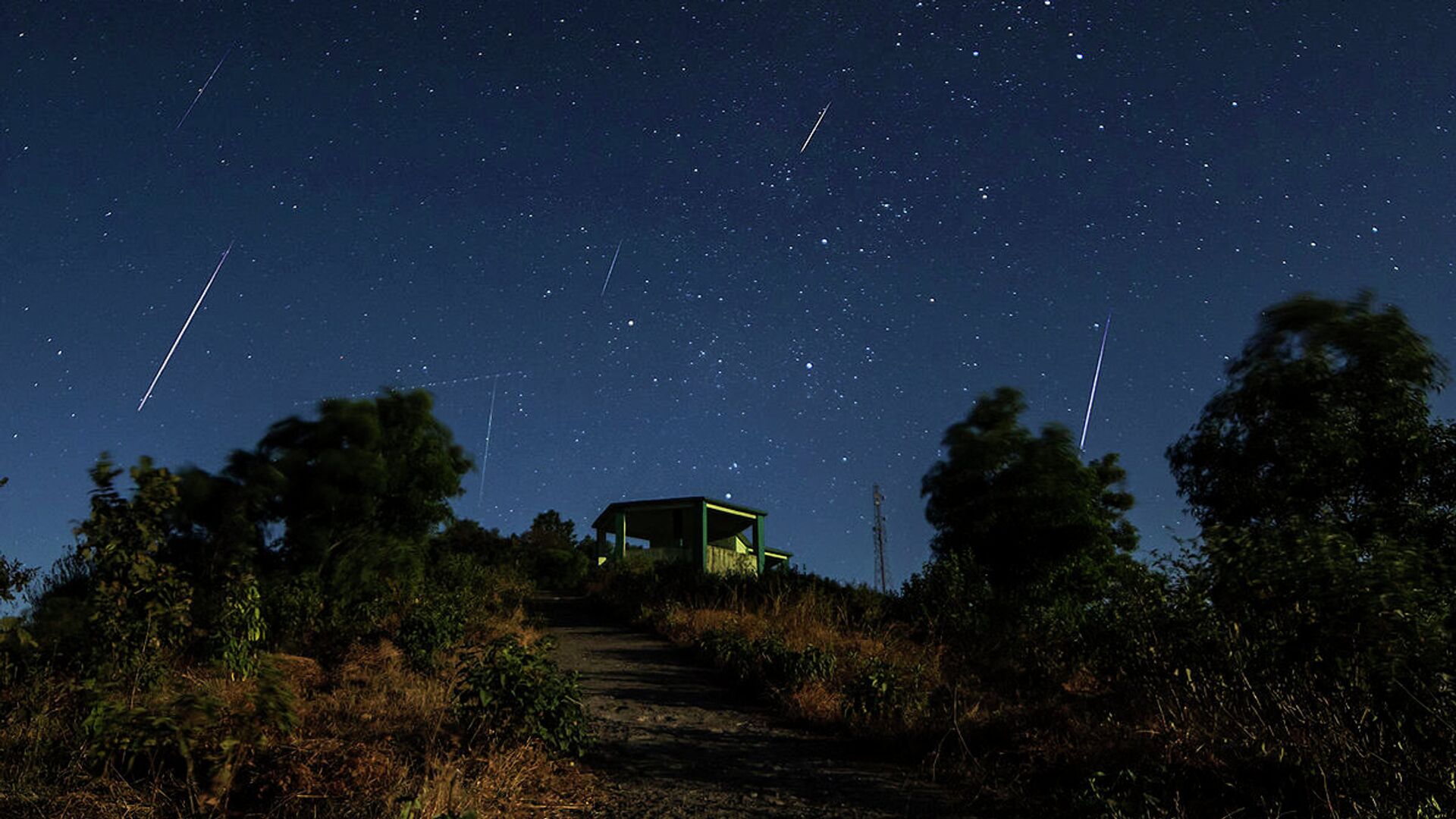https://sputnikglobe.com/20230506/get-ready-to-enjoy-shooting-stars-as-eta-aquariids-dazzle-sky-1110141922.html
Get Ready to Enjoy Shooting Stars as Eta Aquariids Dazzle Sky
Get Ready to Enjoy Shooting Stars as Eta Aquariids Dazzle Sky
Sputnik International
Although the bright full moonlight may make it challenging to witness the meteor shower, those in Eastern Europe, Africa, Asia, Australia, and parts of the Pacific will be able to see the Moon eclipsed by the Earth, darkening the sky and making it theoretically easier to spot the meteors.
2023-05-06T14:13+0000
2023-05-06T14:13+0000
2023-05-06T14:13+0000
beyond politics
space
shooting star
meteor shower
https://cdn1.img.sputnikglobe.com/img/101556/45/1015564523_0:63:1200:738_1920x0_80_0_0_1c076b1e96e2e90b634d1525e7c6bb32.jpg
Be prepared to behold a mesmerizing display of shooting stars tonight as the Earth collides with dust and debris left by Halley’s Comet. The meteor shower, named after the star Eta Aquarii, is predicted to peak overnight on May 5-6 and 6-7, 2023, providing sky-watchers with the chance to witness a flurry of meteors streaking across the night sky. This year’s meteor shower may be even more spectacular than usual. Scientists predict that the meteor rates could be more than twice the usual number, with up to 60 to 120 shooting stars per hour in each hemisphere, compared to 10 to 30 in normal years.The Eta Aquariids can more often be seen as “Earthgrazers” in the northern hemisphere, appearing low on the horizon, while the view of the meteor shower is better in the southern hemisphere. The hemispheric difference boils down to the visibility of the constellation Aquarius, which is much better in the southern one. Halley’s Comet orbits the Sun every 75-79 years and was last seen in 1986. It is set to return to the inner solar system in 2061, but on December 9, 2023, it will reach its aphelion, the furthest point in its orbit from the Sun, before turning back towards it.
https://sputnikglobe.com/20230225/scientists-get-front-row-viewing-of-black-hole-devouring-mysterious-gas-cloud-1107786080.html
Sputnik International
feedback@sputniknews.com
+74956456601
MIA „Rossiya Segodnya“
2023
Sputnik International
feedback@sputniknews.com
+74956456601
MIA „Rossiya Segodnya“
News
en_EN
Sputnik International
feedback@sputniknews.com
+74956456601
MIA „Rossiya Segodnya“
Sputnik International
feedback@sputniknews.com
+74956456601
MIA „Rossiya Segodnya“
meteor shower, halley comet, comet, shooting stars
meteor shower, halley comet, comet, shooting stars
Get Ready to Enjoy Shooting Stars as Eta Aquariids Dazzle Sky
Although bright moonlight might make it challenging to witness the meteor shower, people in Eastern Europe, Africa, Asia, Australia, and parts of the Pacific will be able to see the Moon eclipsed by the Earth, darkening the sky and making it easier to spot the meteors.
Be prepared to behold a mesmerizing display of shooting stars tonight as the Earth collides with dust and debris left by Halley’s
Comet. The meteor shower, named after the star Eta Aquarii, is predicted to peak overnight on May 5-6 and 6-7, 2023, providing sky-watchers with the chance to witness a flurry of
meteors streaking across the night sky.
This year’s meteor shower may be even more spectacular than usual. Scientists predict that the meteor rates could be more than twice the usual number, with up to 60 to 120 shooting stars per hour in each hemisphere, compared to 10 to 30 in normal years.
The Eta Aquariids can more often be seen as “Earthgrazers” in the northern hemisphere, appearing low on the horizon, while the view of the meteor shower is better in the southern hemisphere. The hemispheric difference boils down to the visibility of the constellation Aquarius, which is much better in the southern one.

25 February 2023, 00:46 GMT
Halley’s Comet orbits the Sun every 75-79 years and was last seen in 1986. It is set to return to the inner solar system in 2061, but on December 9, 2023, it will reach its aphelion, the furthest point in its orbit from the Sun, before turning back towards it.



